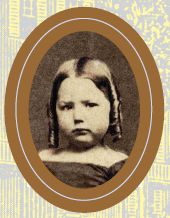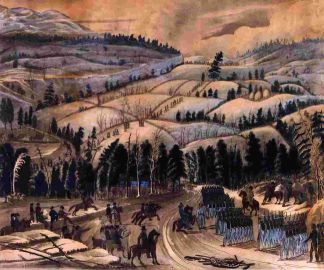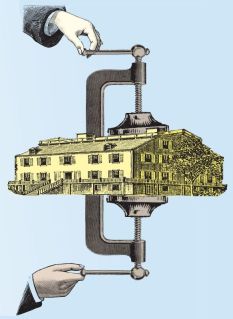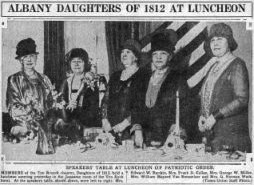The Rankins of Cherry Hill: Struggling with the Loss of Their World
 Cherry Hill was home to Catherine Putman Rankin and her family from 1884 through 1963. Within its walls, Catherine created a refined way of life that glorified her Van Rensselaer family heritage. During her lifetime, she and other members of America’s elite faced profound social, economic and political changes that threatened their way of life and position in society. Catherine and many others chose to look to the past as a means of coping with these changes.
Cherry Hill was home to Catherine Putman Rankin and her family from 1884 through 1963. Within its walls, Catherine created a refined way of life that glorified her Van Rensselaer family heritage. During her lifetime, she and other members of America’s elite faced profound social, economic and political changes that threatened their way of life and position in society. Catherine and many others chose to look to the past as a means of coping with these changes.
 The Cherry Hill Van Rensselaers were part of a group of wealthy and powerful families known as the Hudson River manor lords.Under Dutch rule, which lasted from 1624 to 1664, the Dutch West India Company and the States General of the Netherlands granted vast expanses of land–or patroonships–to members of the company who could establish and populate settlements in the colony. Kilian Van Rensselaer (1585-1646), a Dutch merchant and the founder of the dynasty to which generations of Cherry Hill occupants belonged, was one such individual. His roughly 850,000-acre tract, called Rensselaerswyck, was the only patroonship to be successfully established during the Dutch period. The English who took over the colony in 1664 patented a larger (one million acres) Rensselaerswyck and went on to establish about 30 more estates–14 with lordship privileges–occupying more than two million acres.
The Cherry Hill Van Rensselaers were part of a group of wealthy and powerful families known as the Hudson River manor lords.Under Dutch rule, which lasted from 1624 to 1664, the Dutch West India Company and the States General of the Netherlands granted vast expanses of land–or patroonships–to members of the company who could establish and populate settlements in the colony. Kilian Van Rensselaer (1585-1646), a Dutch merchant and the founder of the dynasty to which generations of Cherry Hill occupants belonged, was one such individual. His roughly 850,000-acre tract, called Rensselaerswyck, was the only patroonship to be successfully established during the Dutch period. The English who took over the colony in 1664 patented a larger (one million acres) Rensselaerswyck and went on to establish about 30 more estates–14 with lordship privileges–occupying more than two million acres. By the late 1800s, there existed a class of new millionaires with unprecedented levels of wealth.
By the late 1800s, there existed a class of new millionaires with unprecedented levels of wealth. Old Albany families included names like Pruyn, Sanders, Lansing, Schuyler, and of course, Van Rensselaer. In response to the major changes that were occurring in Albany’s population, economy, and politics, many of these families looked to the past, and they actively preserved and restored their landmarks, including Schuyler and Ten Broeck Mansions, and Crailo, located just across the river. These grand old homes drew national attention as symbolizing an older and better way of life. Cherry Hill was just one such house to be featured in books, magazine articles and museum exhibitions devoted to the colonial period.
Old Albany families included names like Pruyn, Sanders, Lansing, Schuyler, and of course, Van Rensselaer. In response to the major changes that were occurring in Albany’s population, economy, and politics, many of these families looked to the past, and they actively preserved and restored their landmarks, including Schuyler and Ten Broeck Mansions, and Crailo, located just across the river. These grand old homes drew national attention as symbolizing an older and better way of life. Cherry Hill was just one such house to be featured in books, magazine articles and museum exhibitions devoted to the colonial period.